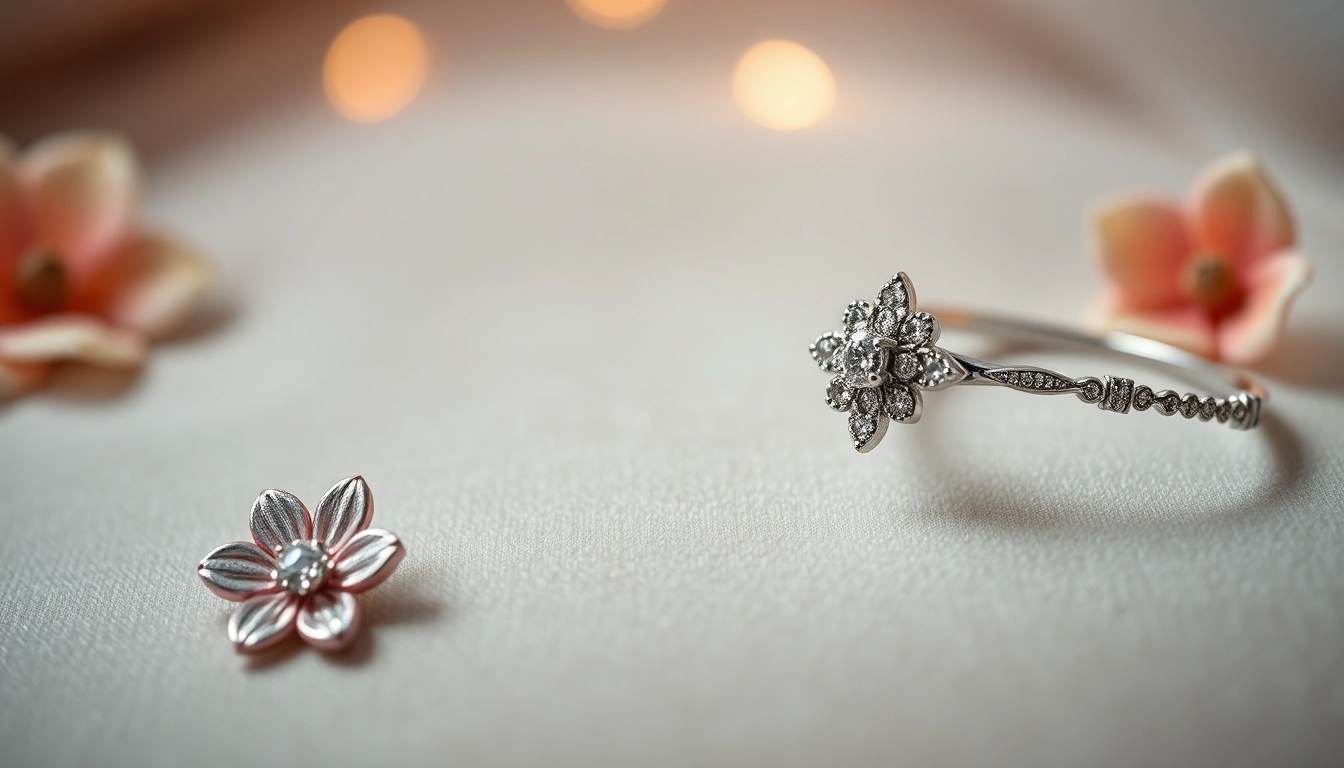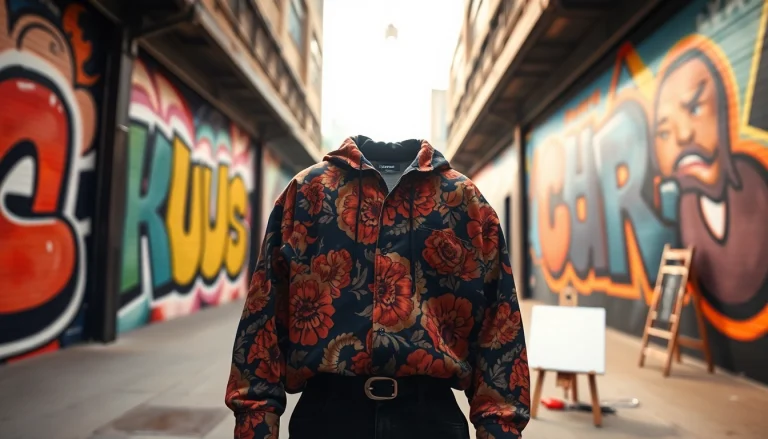Understanding Silver Jewelry
Silver jewelry has captivated audiences across cultures and time periods, taking on both aesthetic value and cultural significance. This versatile metal presents a remarkable breadth of options for jewelry lovers, from elegant necklaces to intricate rings. To explore silver jewelry holistically, one must delve into its rich history, composition, crafting processes, and emerging trends. In this exploration, we’ll also discuss how to choose the right pieces to enrich your collection. For those intrigued by unique and finely crafted pieces, Silver jewelry offers a significant avenue worth exploring.
The History of Silver Jewelry
The history of silver jewelry dates back thousands of years, with archaeological evidence indicating its use in ancient civilizations such as Egypt, Mesopotamia, and Rome. Silver was revered not only for its beauty but also for its practicality, serving both decorative and functional purposes. The Egyptians crafted intricate silver adornments for pharaohs, believing the metal to possess magical properties. Meanwhile, the Romans utilized silver extensively in coinage, jewelry, and ceremonial objects, solidifying its status as a symbol of wealth and power.
In the Middle Ages, silver jewelry took on a more religious connotation, often used to create ornate items for churches and sacred spaces. The Renaissance period spurred a resurgence of personal ornamentation, with silver emerging as a popular material in Europe for the elite. Creative techniques flourished, leading to elaborate designs that reflected artistic styles and the era’s cultural movements.
By the 19th and 20th centuries, silver jewelry saw a democratization, with mass production techniques allowing broader access. Artisans began fusing traditional craftsmanship with contemporary design, creating a myriad of styles that resonate today. Silver remains a cherished medium, symbolizing both elegance and accessibility.
Types of Silver Used in Jewelry
Understanding the types of silver used in jewelry is crucial for discerning quality and deciding on the best pieces for your collection. Here are the most commonly encountered types:
- Sterling Silver: Comprising 92.5% silver and 7.5% other metals (usually copper), sterling silver is the most common form used in jewelry. Its durability and affordability make it a preferred choice for both artisans and consumers.
- Argentium Silver: A modern variant of sterling silver, Argentium contains at least 92.5% silver but includes a small percentage of germanium for enhanced tarnish resistance. Its bright finish and hypoallergenic qualities attract many health-conscious consumers.
- Fine Silver: Comprising 99.9% silver, fine silver is softer and more malleable than sterling, making it less suitable for items subject to wear and tear. It is prized for its purity and often used in artisan pieces.
- Mexican Silver: Unique to Mexico, this designation refers to silver content that meets or exceeds 92.5%. It often features distinctive styles and can include artisan-made elements.
The Crafting Process of Silver Jewelry
The crafting process of silver jewelry is a meticulous blend of artistry and precision. From design conception to final polish, each step contributes to the value and integrity of the piece. Key aspects of this process include:
- Design: Skilled jewelers begin with sketches or CAD designs, allowing them to visualize the final product. Design plays a significant role in ensuring that the piece is not only visually appealing but also comfortable and practical for wear.
- Selecting the Silver: Based on the design, jewelers select the appropriate type of silver, considering factors such as durability, finish, and intended use.
- Shaping: This involves techniques such as soldering, stamping, and hand-forging. Jewelers carefully manipulate the silver into the desired shapes and patterns, often employing tools that reflect centuries-old craftsmanship.
- Finishing: The final stage involves polishing the piece, which can include additional processes like oxidation for contrast or gemstone setting for added beauty. This finishing touches ensure that the piece shines and captures attention.
Trends in Silver Jewelry
As with any fashion accessory, trends in silver jewelry evolve continuously, influenced by cultural shifts, technology, and artistic movements. Staying informed on these trends can help collectors make enlightened purchases that resonate with contemporary aesthetics while maintaining long-lasting appeal.
Current Design Trends
Current design trends in silver jewelry lean toward minimalism and sustainability. Many artisans are embracing clean lines, geometric shapes, and understated elegance in their pieces. Textured finishes and mixed materials are also gaining traction, allowing jewelers to combine silver with wood, leather, or resin for an innovative effect.
Another notable trend is the use of ethical and recycled materials, appealing to the growing environmentally conscious consumer base. Eco-friendly practices are becoming integral to production, favoring solutions that prioritize sustainability without sacrificing quality.
Popular Silver Jewelry Styles
Some popular styles rising to prominence include:
- Stackable Rings: These versatile pieces offer endless possibilities for customization, allowing wearers to mix and match different designs to create a personalized look.
- Chunky Chains: Bold, oversized silver chains are making a statement, offering a strong focal point for any outfit while lending a sense of modernity.
- Nature-Inspired Designs: Floral motifs, leaf shapes, and organic textures draw inspiration from nature, resonating with consumers who appreciate the beauty of the natural world.
- Pendants with Meaning: Personalized pendants that symbolize love, family, or spirituality are increasingly favored for their emotional significance, further personalized by engravings.
Emerging Techniques in Silver Crafting
Several innovative techniques are reshaping the crafting landscape of silver jewelry today:
- 3D Printing: This technology is revolutionizing jewelry design, enabling artisans to create intricate, detailed pieces that were once impossible to produce by hand.
- Laser Cutting: Precision laser technology allows for intricate cuts and patterns, enhancing the overall complexity and creativity of designs.
- CNC Machining: Computers control these processes, ensuring high accuracy in creating detailed designs, which saves time while maintaining craftsmanship quality.
Choosing the Right Silver Jewelry
Picking the right silver jewelry is essential for complementing your style and ensuring that your investment retains its value. Understanding aspects such as quality, style, and care significantly impacts your purchasing decisions.
Understanding Quality Marks and Authenticity
When purchasing silver jewelry, familiarity with quality marks is crucial for confirming authenticity. In the United States and many other countries, established standards dictate that sterling silver must bear a stamp denoting at least 92.5% purity. Common stamps include:
- 925: Indicates sterling silver content.
- FS: Signifies fine silver, containing 99.9% silver.
- Argentium: Some pieces may bear the Argentium mark to denote enhanced quality.
Verifying these marks can protect you from misleading claims and counterfeit products, ensuring you’re making a sound investment.
Selecting the Right Style for Your Look
Choosing the right style involves considering both your personal aesthetics and practical needs:
- Match Your Skin Tone: Certain silver tones look better on specific skin tones—cool undertones usually pair well with bright silver, while warmer undertones may suit antique finishes.
- Consider Your Wardrobe: Assess how often you wear silver jewelry and what styles complement your existing wardrobe. Minimalist pieces can bridge numerous outfits, while statement pieces should stand out and enhance your ensemble.
- Understand Your Lifestyle: If you lead an active lifestyle, opt for simpler designs that are less likely to snag or get damaged.
Caring for Your Silver Jewelry
The longevity of silver jewelry substantially relies on proper care. Here are key maintenance tips to keep your jewelry in pristine condition:
- Regular Cleaning: Use a gentle silver polish cloth to remove tarnish, or soak the pieces in a mild solution of warm water and a few drops of dish soap. Avoid harsh chemicals.
- Store Properly: Keep silver jewelry in a dry, cool place, ideally in an anti-tarnish pouch or wrapped in soft cloth to prevent scratches.
- Avoid Excess Moisture: Remove jewelry before swimming or showering, as prolonged exposure to water can speed up tarnishing.
Where to Buy Quality Silver Jewelry
Choosing the right retailer is essential for ensuring you receive quality silver jewelry. Various shopping avenues exist, each offering unique advantages and experiences.
Comparing Different Retailers
It’s wise to compare various retailers to understand better the availability, pricing, and quality of silver jewelry:
- Independent Jewelers: Local artisans often offer handcrafted, unique pieces but may come at a premium due to their artisanal nature.
- Online Retailers: E-commerce platforms provide extensive selections, usually at lower prices. However, it’s vital to research the retailer’s return policy and customer reviews to identify reputable sellers.
- Department Stores: Well-established brands often provide quality guarantees and ease of return, though their selection may skew towards more commercial designs.
Online vs. Brick-and-Mortar Shopping Experiences
Deciding between an online or a brick-and-mortar experience hinges on personal preference:
- Online Shopping: Offers convenience and often a wider range of styles. However, customers may have challenges assessing quality without physical inspection.
- Brick-and-Mortar Shopping: Allows for direct interaction with the jewelry; customers can try on pieces and inspect craftsmanship closely, while also receiving immediate customer service.
How to Spot Good Deals on Silver Jewelry
Finding good deals takes a blend of timing and strategic searching:
- Sales Seasons: Keep an eye out for seasonal promotions or holidays when retailers commonly offer discounts.
- Sign Up for Newsletters: Many jewelry retailers offer exclusive promotions and early access to sales for subscribers.
- Comparison Shopping: Use price comparison tools or websites to ensure you’re making a well-informed purchase without overpaying.
Investing in Silver Jewelry
For collectors and enthusiasts, silver jewelry can represent more than an accessory; it can serve as a lucrative investment opportunity. Understanding the market value of silver and keeping abreast of trends can help ensure that your investment pays dividends.
The Value of Silver as an Investment
Silver has historically been seen as a safe investment, often fluctuating in value in response to economic changes. Investing in silver jewelry necessitates awareness of several factors, including:
- Market Demand: Demand can spike due to economic shifts or changes in consumer preferences, driving up the value of certain types of silver jewelry.
- Purity and Weight: Higher purity levels and heavier pieces generally carry a greater intrinsic value, which can positively affect resale value.
- Cultural and Historical Significance: Unique pieces with historical or cultural relevance often appreciate over time, making them prized possessions among collectors.
Collecting High-End Silver Jewelry
High-end silver jewelry typically encompasses designer pieces or unique collections that demonstrate exceptional craftsmanship. For those aspiring to collect such items:
- Attend Auctions and Estate Sales: These venues often showcase rare finds that can be acquired at competitive prices.
- Network with Collectors: Building relationships with fellow collectors can provide valuable insights into investment strategies and pieces worth pursuing.
Market Trends in Silver Jewelry Investment
Keeping an eye on market trends can inform buyers about potential investments in silver jewelry:
- Emerging Popularity: Celebrity endorsements and high-profile fashion shows can increase the desirability of certain styles and pieces.
- Innovative Craftsmanship: As new techniques gain popularity, pieces that incorporate these elements may see an increase in value.
- Shifts in Consumer Attitudes: Increasing emphasis on ethical and sustainable practices could shape purchasing habits, potentially influencing market values.








